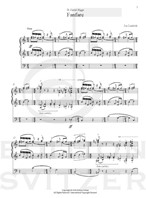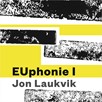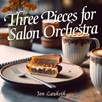
Pieces for Organ Solo and Organ Four Hands
Composer: Jon Laukvik
Instrument: For Organ Solo and Organ Four Hands
Level: Advanced
Published: 2024
Price: €35.00
Item details
-
Description +
-
An extra part with Duo and Lever du jour is included with the volume
Preface
Fanfare was composed for my dear colleague David Higgs (Eastman School of Music, Rochester/USA) to his 60th birthday. Originally, the piece consisted only of the first part (which can therefore be played alone). The middle section was added later, with a clear reference to the notes D and B (German H). The solo passages in bars 7, 14, 57 and 64 are intended for an Anglo-American high-pressure stop.
Ostinato was originally composed for harpsichord and is clearly inspired by jazz; but it also works well as an organ piece. The faster the note values, the freer they should be in performance. The bass, on the other hand, is to be played very strictly in time.
Melodia was, when composed, intended for a stage play, which unfortunately did not come to realization. Please play molto espressivo and with quiet melancholy. A Clarinet or Oboe would be recommended as a solo voice, rather than an overtone mixture such as the Sesquialtera. The second part, if repeated, can be performed differently in terms of dynamics than in the first representation.
Chaconne was composed in 2005 and, like Ostinato, is clearly inspired by jazz. Please no ritardando in the last bar! The piece disappears into silence without announcement.
Tre slåtter / Three Norwegian Peasant Dances, traditional Norwegian peasant dances, which are mainly performed on the Hardingfele (Hardanger fiddle), form a great treasure trove of very impressive, highly emotional music. Edvard Grieg has set several such slåtter for the piano with subtle, romantic, and chromatic harmony (op. 17 and especially op. 72). The names in brackets indicate the place where the melody was written down. Sunnfjord is a county in western Norway. The fjord goes from the coast eastwards inland. Valdres is a county in the middle of southern Norway, about 200 km northwest of Oslo. Telemark is a district southwest of Oslo with a coastline to the Oslofjord and high mountains in the hinterland. All ornaments must be performed on the beat, with the only exception of the short appoggiatura (see physical edition) that is to be played before the beat.
Two Chorale Preludes, Jesu, meine Freude was written at the suggestion of Heiner Graßt in 2010 and is dedicated to him. The world premiere took place on the Führer organ of the Alte Kirche Essen-Kray on 17 November 2010 on the occasion of "Essen European Capital of Culture 2010". If there should be anything symbolic in this piece, the manual parts could be understood as haze. The chorale sounds gently from high above through the haze. The Solo-2' should be coupled from a Swell division into the pedal – if possible. Only then can the desired expressive decrescendo be made at the end. If no Swell 2' is available, the last tone can be performed on a Swell 4'.
Silent Night (1983) – a meditation – transfigures the nocturnal Christmas atmosphere with the mysterious sound of Voix céleste and Messiaen-like chords. The melody that sounds from bar 15 is Jeg er så glad hver julekveld, a Norwegian Christmas carol that was written in 1859 and is very popular in my homeland.
Duo for organ four hands was commissioned by "Den norske orgelduo" ("The Norwegian Organ Duo") and composed in 1995/96. The organ duo consisted of Stig Wernø Holter and Stein Johannes Kolnes. The tremolos should be performed extremely fast, the fugue must be rhythmically extremely concise.
Lever du jour, I was about twelve years old when I heard this part of Maurice Ravel's ballet Daphnis et Chloé for the first time on Norwegian Radio NRK. I was paralyzed by the beauty and imagery of this morning mood music. Much later, this transcription for organ four hands was written. For technical reasons I did not adopt the two-part 32nd note figuration of the original. How a hint of two-part harmony could be achieved is indicated at the bottom of the first page of music.m.d. (mano destra): right hand / m.s. (mano sinistra): left hand.
-
-
Instrumentation +
-
Pieces for Organ Solo and Organ Four Hands
-
-
About the composer +
-
Jon Laukvik was born in 1952 and received his earliest music training as organist and pianist in his native town Oslo. He went on to study organ at the University of Music in Cologne with Michael Schneider and harpsichord with Hugo Ruf. He also studied organ privately with Marie-Claire Alain in Paris.
From 1980 till 2016, he was professor at the University of Music and Performing Arts Stuttgart. Since 2001 he is also professor at the Norwegian Academy of Music in Oslo. He is also a visiting professor at the Royal Academy of Music, London.
Jon Laukvik has toured throughout Europe, Canada, Japan, Korea, Israel and the United States. He is frequently in demand to serve on competition juries and to teach seminars and masterclasses.
He is author of a highly successful organ tutor Historical Performance Practice in Organ Playing in three volumes, published by Carus-Verlag.
He has edited the Handel Organ Concerti Op. 7 for Carus-Verlag (together with Werner Jacob). A complete edition of the organ works of Louis Vierne in 13 volumes (edited together with David Sanger) was published by Carus-Verlag in 2008.
His compositions include works for solo organ, organ with other instruments (i.e. piano, percussion, trumpet, trombone, cello, horn) as well as vocal and instrumental works.
-
-
Credits +
-
Front Cover Graphics: Nicola Lee
Printed in Copenhagen, Denmark
Copyright © Edition SVITZER
www.editionsvitzer.com
With support from Koda’s Cultural Funds
-










